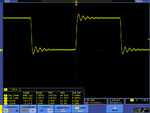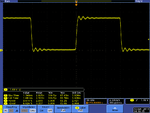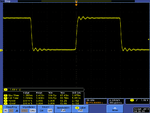rayhh27
Member level 1

Hi,
I have some question regarding SPI PCB routing.
1. For a short trace such as 30mm, do we actually need a termination resistor to damp the reflection?
2. Does a 0.18mm width of trace enough to give clean signal for SPI clock?
3. Is it true that it is not recommended to use via for clock signal in general?
4. From my research over the internet, I found that MISO pin on SPI need a pull down resistor like around 100k, is this actually necessary?
5. For the value of termination resistor, I read that it is the value of the trace impedance and the driver impedance, lets say that the trace is 50 ohm and the driver impedance is 20 ohm, so I will need a termination resistor of 70 ohm? Is this calculation correct?
6. Thank you very much.
Best regards,
RH
I have some question regarding SPI PCB routing.
1. For a short trace such as 30mm, do we actually need a termination resistor to damp the reflection?
2. Does a 0.18mm width of trace enough to give clean signal for SPI clock?
3. Is it true that it is not recommended to use via for clock signal in general?
4. From my research over the internet, I found that MISO pin on SPI need a pull down resistor like around 100k, is this actually necessary?
5. For the value of termination resistor, I read that it is the value of the trace impedance and the driver impedance, lets say that the trace is 50 ohm and the driver impedance is 20 ohm, so I will need a termination resistor of 70 ohm? Is this calculation correct?
6. Thank you very much.
Best regards,
RH






